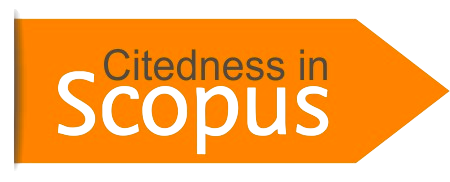MENGHINDARKAN REMAJA DARI PENYALAHGUNAAN NARKOBA MELALUI INTERVENSI IDENTITAS
DOI:
https://doi.org/10.15575/psy.v4i1.2199Keywords:
adolescence, drug abuse, sense of identity, and interventionAbstract
This paper intended to give a conceptual framework in order to prevent adolescent from drug abuse by using a developmental approach. Search for identity is one aspect of psychosocial development which very crucial in periods of adolescence and most developmentalist which agree that healthy or unhealthy personality developmental be attributable to the process of search for identity. Most developmentalist have a belief that adolescents achieve a sense of identity tend to demonstrate a healthy and constructive behavior, while failing achieve becoming vulnerable to  various forms of psychosocial disturbance, one of which drug abuse. Therefor, to prevent teenagers from drug abuse we can do with helping them to achieve a sense of identity.
References
Archer, S.L. (1994). Intervention for Ado-lescent Identity Development. London: Sage Publication.
Brown, S.D., & Lent, R.W. (1992). Handbook of Counseling Psychology. 2nd.ed. New York: John Wiley & Sons.
Fuhrmann, B.S. (1990). Adolescence. 2nd ed. Illinois: Scott, Foresman/Little, Brown Higher Education.
George, Rickey L. dan Cristiani, TS. (1981). Theory, Methods, and Process of Coun-seling and Psychotherapy. Englewood Cliffs, New Jersey: Prentice Hall, Inc.
Hackney, H.L., & Cormier, L.S. 2001. The Professional Counselor. A Process Gu-ide to Helping.
Gladding, Samuel T. (1995). Groups Work: A Counseling Specialty. 2nd. Ed. New Jersey: Merrill, an Imprint of Prentice Hall
Hjelle, Larry A, & Ziegler Daniel J. (1991). Personality Theories. Basic Assumtion, Research, and Applications. 3rd. Ed. New York: McGraw Hill International Editions.
Huffman, K., & Vernoy, M., & Williams, B. (1991). Psychology in Action. 2nd. Ed. New York: John Wiley & Sons.
Kendall, N. & Ford. (1997). Clinical Psychology, Scientific and Professional Dimension. New York: McGraw Hill International Editions.
Lerner, R.M., & Hultsch, D.F. (1983). Human Development. A Life Span Perspective. New York: McGraw HillBook Co.
Lopez, F.G. (1992). Family Dynamics and Late Adolescent Identity Development. New York: John Wiley & Sons, Inc.
Marcia, J.E., & Waterman, A.S., & Archer, S.L., & Orlofsky, J.L. (1993). Ego Identity. A Handbook for Psychological Research. New York: Springer Verlag.
Ohlsen, M.M. (1970). Group Counseling. New York: Holt, Rinehart and Winston, Inc.
Papalia, Diane E., & Olds, Sally W. (1995).
Human Development. 6th ed. New York: McGraw-Hill, Inc.
Steinberg, Laurence. (1993). Adolescence. In-ternational ed. New York: McGraw Hill., Inc.
________ “70 % Pencandu narkoba adalah siswa.†Media Indonesia, 11 Februari 2000.
________ “Penyalahgunaan narkoba terbesar di kalangan siswa.†Bisnis Indonesia, 12 September 1999.
________â€Jangan biarkan mereka kecandu-an.†Republika, 1 Oktober, 2000.
________ “Kobarkan perang lawan narkoba .†Pikiran Rakyat, 4 September 1999.
________ “Meningkat, peredaran narkoba.†Pikiran Rakyat, 7 Desember, 2001
Downloads
Published
Issue
Section
Citation Check
License
The author whose published manuscript approved the following provisions:
1. The right of publication of all material published in the journal / published on the E-Journal of Psychology website is held by the editorial board with the knowledge of the author (moral right remains the author of the script).
2. The formal legal provisions for access to digital articles of this electronic journal are subject to the terms of the Creative Commons Attribution-ShareAlike license (CC BY-SA), which means that the Journal of Psychology reserves the right to save, transmit media / format, manage in database form, , maintain, and publish articles without requesting permission from the Author as long as it continues to include the name of the Author as the owner of Copyright.
3. Printed and published print and electronic manuscripts are open access for any purposes. In addition to these objectives, the editorial board shall not be liable for violations of copyright law.
Â






